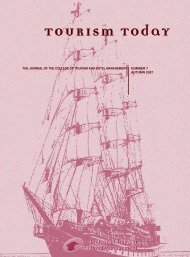The Invisible Black Victim: How American Federalism Perpetuates ...
The Invisible Black Victim: How American Federalism Perpetuates ...
The Invisible Black Victim: How American Federalism Perpetuates ...
Create successful ePaper yourself
Turn your PDF publications into a flip-book with our unique Google optimized e-Paper software.
<strong>The</strong> Policy Agendas Project sorts congressional hearings into 21 topic codes. <strong>The</strong> topic code<br />
used here was Crime, Law and Family (code 12), with all hearings related to family excluded<br />
unless they were specifically related to crime or the criminal law. To select the sample, I<br />
sorted the data by whether the hearing was procedural in nature (Eeecutive branch [1201],<br />
courts [1204], police and weapons [1209], and prisons [1205]) or addressed substantive<br />
crimes or crime prevention (white collar [1202], drugs [1203], juveniles/juvenile justice<br />
[1206], riots/crime prevention [1211], sex crimes/crimes against children [1212], and the<br />
criminal code [1210]) and by date. Because substantive hearings outnumbered procedural<br />
ones, I took every fifth substantive hearing and every fourth procedural hearing.<br />
I coded witnesses into five broad and 16 specific categories: criminal justice (prosecutors,<br />
law enforcement, other), government (noncriminal justice), professional (medical, religious,<br />
educational, social service, legal, research, business/labor), citizen (single-issue and broad),<br />
and other/unknown. Those groups organized around professional interests were coded as<br />
professional associations, e.g., the <strong>American</strong> Medical Association, Princeton University, the<br />
National Education Association, the Chamber of Commerce, and the Baptist Foundation of<br />
America. I coded membership groups that were not related to professional interests as citizen<br />
groups. Singleissue and broad citizen groups were distinguished by the scope of their<br />
interests, not the breadth of their membership. I coded groups with a single crime or single<br />
justice concern, e.g., Mothers Against Police Brutality and the NRA, as single-issue and<br />
groups with more than one issue at stake, such as the Urban League, neighborhood and<br />
community organizations, and the NAACP, as broad citizen groups.<br />
I selected for review congressional hearings that focused on issues of concern to urban<br />
minorities, including drug initiatives, youth recreation and crime prevention, gun violence,<br />
gangs, and police misconduct. I focused on these hearings in order to maximize the<br />
possibility of capturing minority political voices and to illustrate the dominance of criminal<br />
justice agencies and singleissue citizen groups, even in hearings in which one might expect<br />
urban minorities to dominate.<br />
Urban Data<br />
I obtained transcripts of legislative hearings between 1997 and 2006 from chief clerks at the<br />
Philadelphia and Pittsburgh city council offices and coded witnesses using the same coding<br />
scheme, noted above, as the congressional hearings. Witnesses at the hearings are usually<br />
listed at the beginning of each transcript, and I compiled the data on 500 witnesses at these 45<br />
hearings from the witness list. <strong>The</strong> bulk of the hearings (40) come from Philadelphia, where<br />
hearings on public safety are easily identifiable by the committee that is holding the hearing.<br />
By contrast, Pittsburgh council hearings that are open to public testimony address a wide<br />
range of issues. I waded through dozens of hearings in order to identify the few that were<br />
relevant for this project. <strong>How</strong>ever, the witnesses at those hearings and confirmed by the<br />
interviews are representative of the type of witnesses at Pittsburgh legislative hearings and<br />
are consistent with the findings from the witnesses and interviews in Philadelphia.<br />
I conducted interviews were conducted with six current and one former member of the<br />
Pittsburgh City Council (a nine-member council) and nine members of the 17-member<br />
Philadelphia city council or their legislative aides. City council members were selected<br />
primarily on the basis of their involvement with the councils' Public Safety and/or Judiciary<br />
committees. I conducted the interviews over four months in 2003. <strong>The</strong> interviews lasted<br />
approximately 60-90 minutes and included open-ended questions about the types of crime














